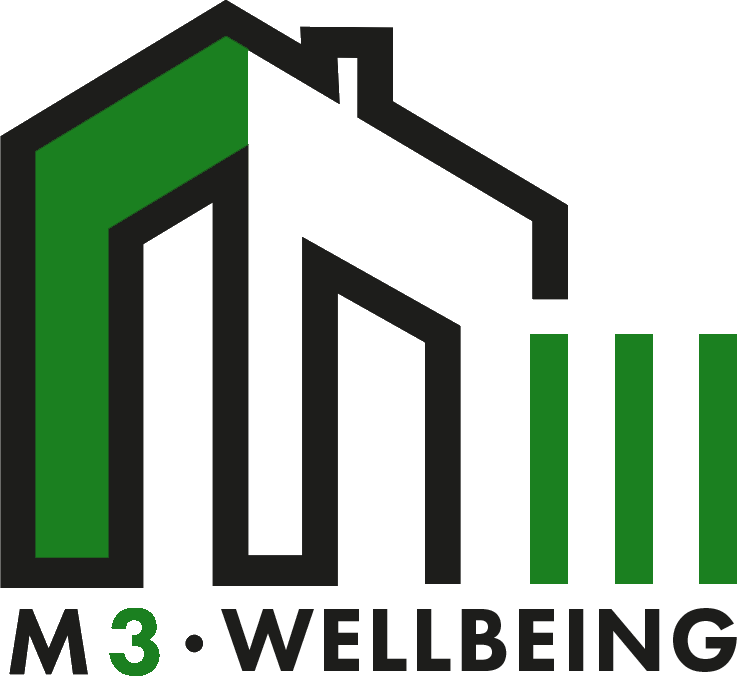Indoor air quality (IAQ) is an increasingly recognised issue in schools across the world. With children spending up to seven hours a day in educational environments, the air they breathe can have a significant impact on their health, wellbeing, and academic performance. Good air quality in schools is vitally important, but it’s often an overlooked factor in creating a safe, productive learning space.
In this article, we’ll explore why IAQ matters, the effects of poor air quality on students and staff, and how schools can monitor and improve IAQ using advanced sensor technologies like those offered by M3 Wellbeing.
The Impact of Poor Air Quality on Schools
Poor indoor air quality can have a profound effect on both the health of students and staff and the overall functioning of schools. Children are particularly vulnerable to airborne pollutants because their lungs are still developing, and they tend to breathe at a faster rate than adults, making them more susceptible to the adverse effects of air pollution.
Health Risks for Students and Staff
When air quality is poor, it can lead to a host of health issues, particularly for those who already have respiratory conditions like asthma. Common pollutants in school environments, including dust, mould, volatile organic compounds (VOCs), and carbon dioxide (CO2), can trigger symptoms such as coughing, shortness of breath, fatigue, and headaches. Over time, prolonged exposure to these pollutants can increase the risk of developing chronic conditions such as asthma or exacerbate existing allergies and respiratory conditions.
Poor air quality can also lead to an increase in absences. A study completed by the Environmental Protection Agency (EPA) showed that IAQ-related issues contributed to missed school days due to illness. The direct correlation between attendance and academic performance further highlights the importance of maintaining good air quality in schools.
Cognitive Function and Academic Performance
In addition to the physical health risks, poor IAQ can significantly affect cognitive function and academic performance. For example, high levels of CO2 can lead to drowsiness, lack of concentration and slower decision making. Studies have shown that when indoor air quality improves, so too do attention levels, memory retention, and overall cognitive abilities.
Clean, fresh air helps students remain alert and engaged, creating a more conducive environment for learning. It can also have a positive impact on teachers and staff, who are better able to maintain focus and productivity throughout the school day.
Common Indoor Air Pollutants in Schools
The quality of indoor air can be affected by several pollutants, many of which are common in school settings. These pollutants can originate from both indoor sources (e.g., cleaning products, building materials, and furniture) and outdoor sources that enter the school through windows or ventilation systems.
Volatile Organic Compounds (VOCs)
VOCs are chemicals that easily evaporate into the air and are found in products such as paints, cleaning supplies, and adhesives. In schools, frequent cleaning and maintenance activities can introduce high levels of VOCs into the indoor environment. Prolonged exposure to VOCs can lead to headaches, dizziness, and irritation of the eyes, nose, and throat.
Carbon Dioxide (CO2)
While CO2 is a naturally occurring gas, high concentrations in classrooms, which are often because of poor ventilation, can cause drowsiness and reduce students’ ability to concentrate. CO2 levels rise quickly in enclosed spaces with large numbers of people, especially when ventilation is not adequate. Monitoring and controlling CO2 levels is essential for maintaining cognitive function in students.
Particulate Matter (PM)
Mould is another significant concern, particularly in older school buildings or those located in humid climates. Mould can grow in damp areas such as bathrooms, kitchens, and poorly ventilated classrooms. Exposure to mould can cause allergic reactions, asthma attacks, and other respiratory issues.
Mould and Dampness
Mould is another significant concern, particularly in older school buildings or those located in humid climates. Mould can grow in damp areas such as bathrooms, kitchens, and poorly ventilated classrooms. Exposure to mould can cause allergic reactions, asthma attacks, and other respiratory issues.
The Role of Ventilation in Improving Air Quality
One of the most effective ways to improve IAQ in schools is through proper ventilation. Ventilation systems play a crucial role in removing stale, polluted air and replacing it with fresh outdoor air. However, many schools have outdated or inadequate ventilation systems that fail to meet the needs of modern learning environments.
Natural vs. Mechanical Ventilation
Natural ventilation relies on the opening of windows and doors to allow fresh air to circulate through a building. While this can be effective in some settings, it isn’t great when it comes to larger or more crowded schools. Outdoor pollution can also sometimes make the problem worse, especially in urban areas.
Mechanical ventilation systems, on the other hand, use fans and ducts to control the flow of air within a building. These systems can be designed to filter out pollutants while bringing in fresh air, making them more effective at improving IAQ in larger spaces like classrooms.
Monitoring Indoor Air Quality in Schools
Given the complexity of indoor air pollutants and the various factors that can influence air quality, monitoring is key to ensuring a healthy school environment. By using advanced monitoring technologies, schools can gain real-time insights into IAQ and take action when necessary.
How M3 Wellbeing Sensors Help Schools
Given the complexity of indoor air pollutants and the various factors that can influence air quality, monitoring is key to ensuring a healthy school environment. By using advanced monitoring technologies, schools can gain real-time insights into IAQ and take action when necessary.
GEM Smart Sensors are highly versatile and capable of monitoring a range of air pollutants, including VOCs, CO2, and particulate matter. These sensors also track humidity, temperature, and the risk of mould growth, helping schools address multiple environmental factors that affect IAQ.
Additionally, GEM Smart Sensors are equipped to detect vaping and smoking, ensuring a safer environment for students. Data from these sensors is displayed on a cloud-based dashboard, allowing administrators to monitor air quality in real-time and receive alerts when levels exceed acceptable thresholds.
AICO Sensors, on the other hand, are more focused on monitoring temperature, humidity, and CO2 levels. These sensors are particularly useful in managing moisture-related issues such as dampness and mould, which can cause long-term damage to school buildings and negatively impact health.
AICO Sensors are designed to integrate with smart systems for seamless monitoring and reporting, making them an efficient tool for schools looking to improve air quality while maintaining energy efficiency and regulatory compliance.
M3 Wellbeing: Expert AICO Installers
M3 Wellbeing is a licensed and expert installer of AICO sensors. Our team has undergone specialised training through AICO’s accredited installer programme, ensuring we are fully equipped to handle the installation and maintenance of these advanced environmental monitoring systems.
This certification guarantees that our team follows best practices in sensor placement, system optimisation, and compliance with all relevant regulations. Schools that work with M3 Wellbeing benefit from this expertise, receiving tailored solutions and ongoing support to keep their indoor environments safe and healthy.


The Benefits of Good Indoor Air Quality in Schools
Improved Student Performance
Good indoor air quality has a direct impact on students’ cognitive abilities. Cleaner air allows students to breathe easier, reducing distractions caused by discomfort or respiratory issues. With fewer allergens and pollutants in the air, students can focus more effectively, leading to better concentration, memory retention, and overall academic performance.
Studies have shown that high levels of carbon dioxide (CO2) and poor ventilation can significantly reduce cognitive function, slowing reaction times and lowering productivity. By ensuring optimal IAQ, schools create an environment where students can thrive academically.
Reduced Absences
Managing indoor air quality can play an important role in reducing the number of student absences. Poor air quality exacerbates asthma, allergies, and other respiratory conditions, causing students to miss school more frequently. Conditions such as mould and high humidity can also contribute to respiratory infections, further increasing absentee rates. By addressing these common triggers through effective IAQ management, schools can lower the incidence of illness and keep students in the classroom, leading to more consistent learning and improved academic outcomes.
Long-Term Cost Savings
Investing in indoor air quality monitoring and control systems can lead to significant long-term financial benefits for schools. By preventing issues like mould growth and dampness, which are often caused by high humidity and poor ventilation, schools can avoid costly building repairs and maintenance. Early detection of air quality issues through sensors allows for proactive interventions, saving money on more extensive remediation efforts down the line.
Additionally, improved air quality can reduce energy consumption by optimising HVAC systems, contributing to lower operational costs.
Compliance with Regulations
Schools are often subject to stringent health and safety regulations regarding indoor air quality, as it directly affects the wellbeing of students and staff. Many countries have established IAQ standards for public buildings, including schools, to ensure that the environment is safe and conducive to learning. Monitoring air quality helps schools stay compliant with these regulations, avoiding potential legal issues, fines, or reputational damage. Also, proactive IAQ management can demonstrate a school’s commitment to the health and safety of its community, creating trust and accountability.
FAQs About Indoor Air Quality in Schools
Common causes include poor ventilation, the presence of pollutants such as VOCs and particulate matter, moisture issues leading to mould, and high levels of CO2 due to crowded classrooms.
Studies have shown that poor air quality, particularly high CO2 levels, can impair cognitive function, leading to reduced concentration, memory retention, and overall academic performance.
Yes, air purifiers equipped with HEPA filters can help remove particulate matter from the air, improving IAQ. However, they are most effective when used in conjunction with proper ventilation systems and air quality monitoring.
Schools can use advanced sensor systems like those provided by M3 Wellbeing to monitor various air pollutants, humidity, temperature, and CO2 levels in real-time. These systems offer actionable data to help schools maintain a healthy indoor environment.
Yes, many countries have established IAQ standards for schools. These regulations vary but generally cover ventilation requirements, acceptable levels of pollutants, and measures for dealing with moisture and mould.
M3 Wellbeing: Your Partner in Air Quality Solutions
M3 Wellbeing specialises in providing innovative solutions to improve indoor air quality in schools and other institutions. With expertise in environmental sensors, M3 Wellbeing offers tailored services to meet the specific needs of schools, from initial site surveys to installation and ongoing support. By utilising GEM Smart Sensors and AICO Sensors, schools can effectively monitor air quality and ensure a healthy environment for students and staff.
Contact Us
If you’re a school administrator or property manager, M3 Wellbeing can help you ensure that your indoor environment meets the highest standards of air quality.
You can contact us on 01908 039526 or please head to our contact us page where you can complete our contact us form. We look forward to hearing from you.




